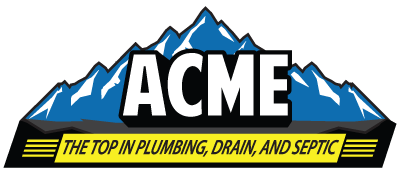Preventing Sewer Line Backups: Regular Maintenance and Best Practices
A sewer line backup is one of the most dreaded plumbing issues homeowners can face. It can cause significant damage, lead to costly repairs, and create an unsanitary environment. Fortunately, with regular maintenance and adherence to best practices, you can significantly reduce the risk of experiencing this unpleasant problem. Here’s a guide to understanding the importance of maintaining your sewer line and the steps you can take to prevent backups.
The Importance of Sewer Line Maintenance
Sewer lines are the unsung heroes of your plumbing system, carrying wastewater away from your home to a treatment facility or septic system. Over time, these pipes can become clogged with debris, tree roots, and other obstructions. Regular plumbing service maintenance ensures that your sewer line remains clear, preventing backups and the associated problems.
Common Causes of Sewer Line Backups
Tree Roots: Tree roots naturally seek out moisture and can infiltrate sewer lines through small cracks or joints. Once inside, they can grow and create significant blockages.
Grease and Fat: Pouring grease and fat down your drains may seem harmless, but they can solidify in the sewer lines, leading to clogs.
Foreign Objects: Items such as baby wipes, feminine hygiene products, and other non-flushable items can create blockages in the sewer line.
Pipe Deterioration: Older pipes made of materials such as clay or cast iron can deteriorate over time, leading to cracks and breaks that allow debris to enter and cause blockages.
Best Practices for Preventing Sewer Line Backups
Regular Inspections: Schedule annual or bi-annual inspections with a professional plumber. They can use video camera technology to inspect the inside of your sewer lines, identifying potential issues before they become major problems.
Tree Root Management: Be mindful of tree planting locations relative to your sewer lines. If you suspect tree roots are a problem, a plumber can use root-killing chemicals or mechanical methods to clear them out.
Proper Disposal of Grease: Never pour grease, fat, or oil down your drains. Instead, collect it in a container and dispose of it in the trash once it has solidified.
Mindful Flushing: Only flush human waste and toilet paper. Avoid flushing items such as baby wipes, paper towels, feminine hygiene products, and other non-biodegradable items.
Install a Backwater Valve: Consider installing a backwater valve in your sewer line. This device allows wastewater to flow out of your home but prevents it from flowing back in during a backup.
Use Enzyme Cleaners: Regularly use enzyme-based cleaners to break down organic matter in your pipes. These cleaners are safe for your plumbing and help maintain clear lines.
Regular Maintenance Tips
Hydro Jetting: Periodically hire a professional to perform hydro jetting, which uses high-pressure water to clear out any debris, grease, or roots from your sewer lines.
Chemical Root Treatments: If tree roots are a recurring issue, consider annual chemical root treatments to prevent growth and keep your pipes clear.
Monitor Water Usage: Excessive water usage can overload your sewer system. Be mindful of running multiple water-intensive appliances simultaneously and consider staggering their use.
Preventing sewer line backups requires a combination of regular maintenance and adherence to best practices. By understanding the common causes of backups and taking proactive steps to maintain your sewer lines, you can avoid the headaches and expenses associated with sewer line issues. Regular inspections, mindful disposal practices, and professional maintenance are key components of a comprehensive sewer line care strategy. Taking these steps will ensure the longevity and reliability of your plumbing system, providing peace of mind and a healthy home environment.
